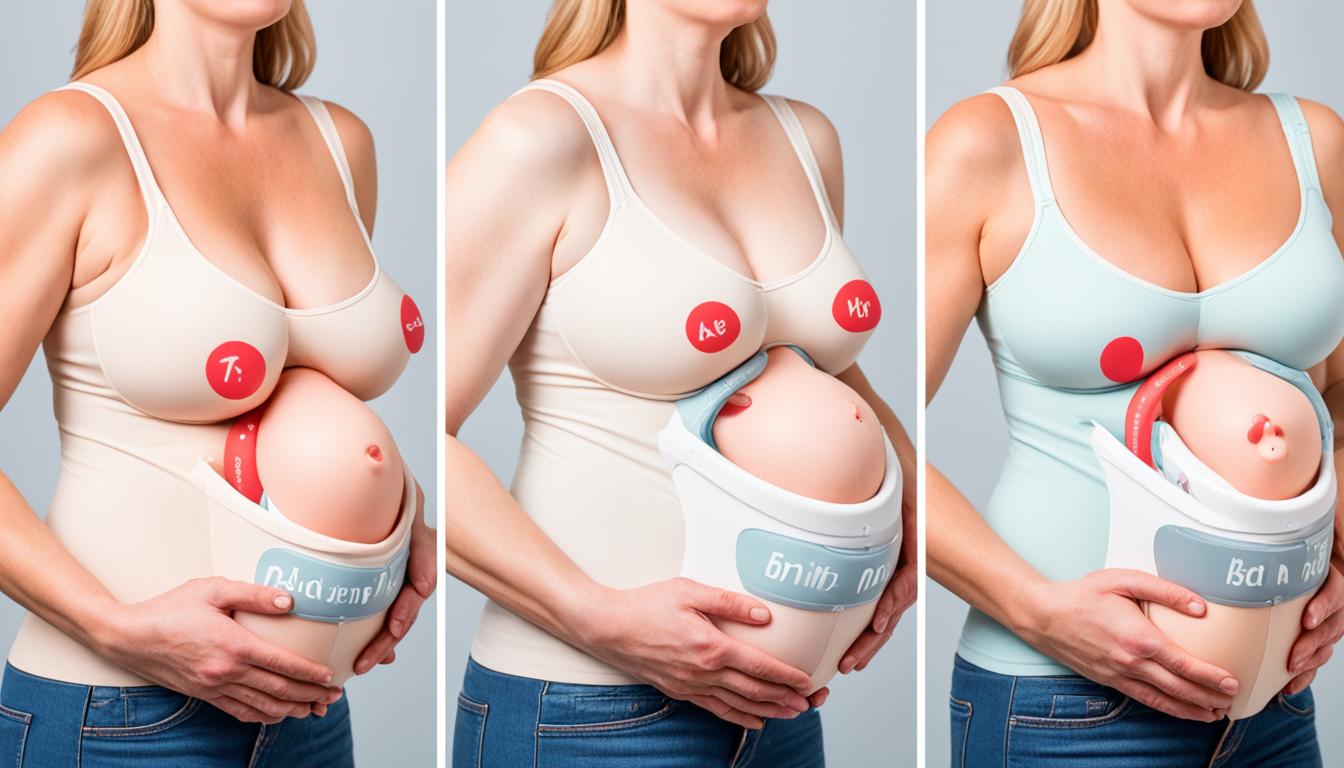As a new mom, I often looked in the mirror. There, I wondered if my breast size would affect breastfeeding. The fear was overwhelming. But here’s what I found out: breast size doesn’t predict breastfeeding success. Most parents can make enough milk with good info and help, no matter the size of their breasts.
What matters for breast size is the fatty tissue it holds. This tissue does not make the milk. So, big breasts don’t always mean more milk. What’s more important is how your breasts grow during pregnancy. This shows that the milk-making parts are developing. If your breasts stay the same size, you can still breastfeed well.
Key Takeaways
- Breast size is not a reliable indicator of milk production.
- Glandular tissue development during pregnancy is a better predictor of breastfeeding success.
- Most pairs of breasts are not identical in size or shape, but this difference may not impact milk production or baby’s preference.
- With the right support and information, most nursing parents can produce a full milk supply.
- Concerns about breast size and breastfeeding ability are common but often unfounded.
Understanding Breast Anatomy and Milk Production
Breasts have fatty tissue for protection and glandular tissue (milk ducts) for milk production. The breast size depends on how much fatty tissue there is. When a woman is pregnant or breastfeeding, her breast size can increase due to more glandular tissue. Most of the milk-making tissues are near the nipple, making a deep latch important for babies.
Fatty Tissue vs. Glandular Tissue
If your bra size increases during pregnancy, it’s a sign of glandular tissue growth. But, if your breasts don’t grow much, it could mean you won’t produce enough milk for your baby. Keep an eye on your baby’s weight early on if you notice this.
Breast Size and Glandular Development During Pregnancy
The amount of milk your breast can hold is its storage capacity. This can vary greatly, from under 3 oz to over 20 oz. Babies whose moms have smaller storage may need to nurse more often to get enough milk. Remember, it’s normal for babies to feed differently in how often they nurse.
Breast Storage Capacity and Nursing Frequency
Does Breast Size Affect Breastfeeding Ability?
Breast size doesn’t predict how much milk you’ll make. A better sign is if your breasts grow during pregnancy. This means your body is preparing to produce milk. If you’re worried about how much milk you’ll make or how to breastfeed, talk to a lactation consultant. They can offer advice and support.
Breast size doesn’t decide how well you’ll breastfeed. Every woman’s breastfeeding journey is different. With help from a lactation expert, you can handle any challenges. They can make sure you succeed in breastfeeding, no matter your breast size or other concerns.
Breastfeeding with Large Breasts
It can be tricky with very large breasts to figure out the best way to hold your baby for a good latch. Seeing if your baby is latched on well might not be easy. The size and shape of your breasts can make certain positions more comfy. If you’re struggling to find the right position, remember to ask for help.
Positioning and Latching Challenges
Some moms worry their big breasts will cover their baby’s nose. Yet, this is usually not an issue. Babies know how to adjust and breathe if their nose gets covered while nursing. You can place your finger on your breast near their nose if you’re worried, but don’t disrupt their latch.
Concerns About Baby’s Breathing
With very large breasts, getting a good latch can be difficult at first. Judging if your baby is latched properly can also be a challenge. Your breast size and shape play a role in what position feels right. If you’re having trouble, don’t hesitate to ask for guidance.

Breastfeeding with Small Breasts
Many moms with smaller breasts worry they won’t make enough milk. But this isn’t always true if it’s not hypoplastic breasts. You might need to nurse more often because smaller breasts hold less milk. Still, you can make enough milk. Watch for enough wet diapers and contact a doctor or a lactation consultant if you see any issues.
Monitoring Milk Supply and Baby’s Growth
The size of your breasts doesn’t show how much milk they can make. People with various breast sizes can feed their babies well. If you worry about your milk supply or your baby’s growth, keep an eye on their diapers and bowel movements. Talk to a healthcare provider if you see any unusual signs, like not enough wet diapers or bowel movements.
Hypoplastic Breasts and Insufficient Glandular Tissue
In rare cases, breasts might not fully grow in puberty. Doctors call this insufficient glandular tissue (IGT) or mammary hypoplasia. This makes it hard to produce enough milk for a baby. You could have IGT if your breasts are too far apart, not the same size, look tubular, or have large areolas and little tissue below them.
Signs of Insufficient Glandular Tissue
Mothers with IGT often see no breast changes in pregnancy. And changes after birth might be slight. While some milk can be produced, it’s usually not enough. Using donor human milk or formula is needed for many. Leaders at La Leche League in Canada can offer help. Remember, whatever milk you can give your baby is valuable.
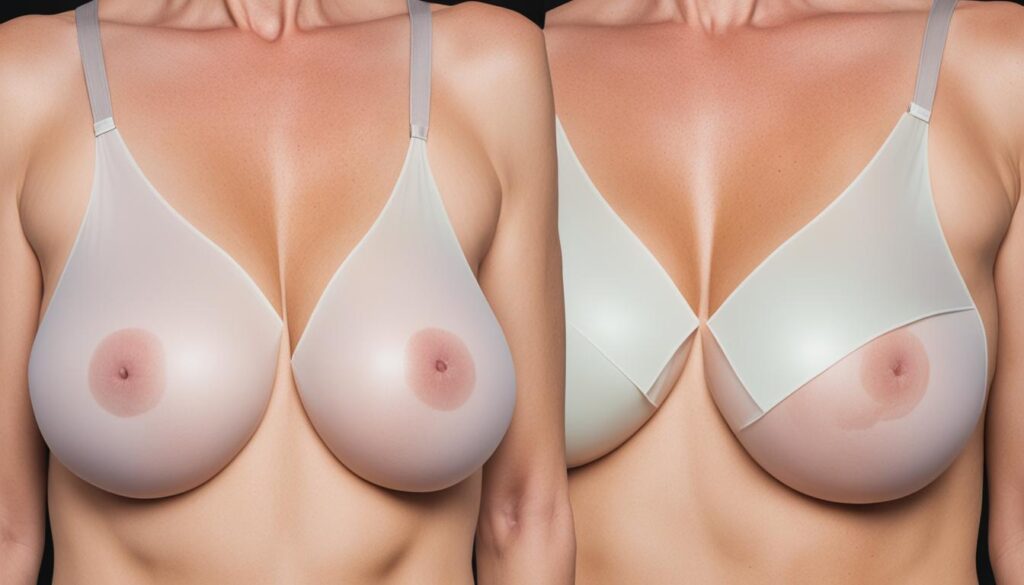
Impact of Body Weight on Breastfeeding
Studies show that overweight and obese moms might produce less milk, even with bigger breasts. This means milk supply isn’t just about breast size. It’s because they often have less milk-making tissue. So, they produce less milk than needed.
Challenges for Overweight and Obese Mothers
If a mom is overweight or obese, she might find breastfeeding hard. Their large breasts make it tough for babies to latch on well. Also, the extra body weight can squeeze the milk ducts, reducing milk flow.
Term vs. Preterm Delivery and Milk Supply
Moms who deliver babies early might have a harder time making enough milk. Babies born closer to their due date benefit from mothers with more developed breasts. This means some moms with preterm babies might not make as much milk as they need.
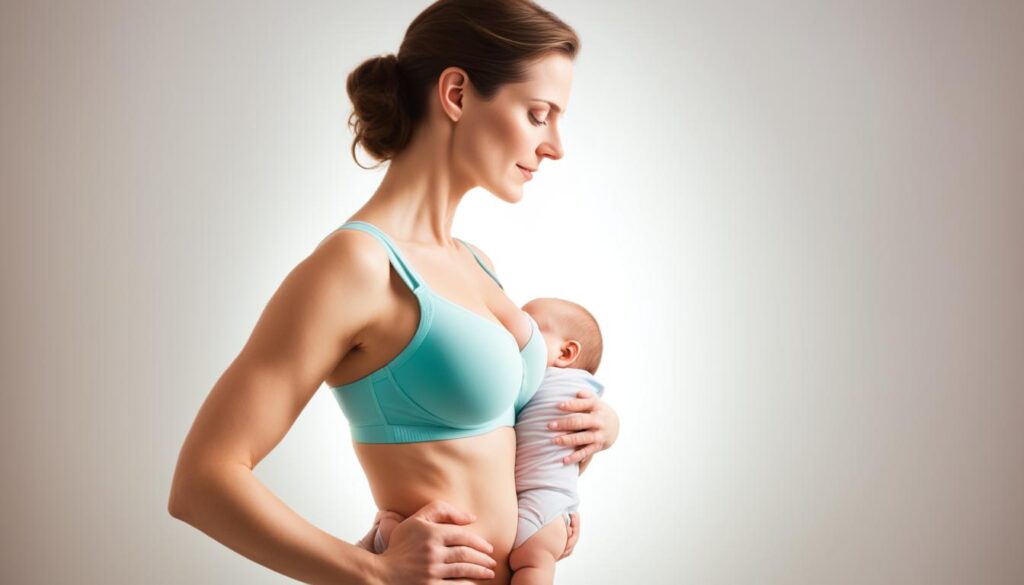
Breastfeeding After Breast Surgery
Wondering if you can breastfeed after surgery? The answer varies. Some women can, even with breast implants. If you had breast implants, your ability to breastfeed might not be affected, depending on the type of surgery and its impact on the nipple and areola.
Breast Reduction and Breastfeeding
Breast reduction surgery can make breastfeeding harder but not impossible. It removes breast tissue and reshapes the breast. This can damage glandular tissue, nerves, and milk ducts, affecting milk supply.
Mastectomy and Breastfeeding Challenges
Had a mastectomy or chest surgery? This might lessen your chances of breastfeeding. The surgery can harm the skin, milk ducts, nerves, and breast tissue essential for creating milk, particularly around the nipple and areola.
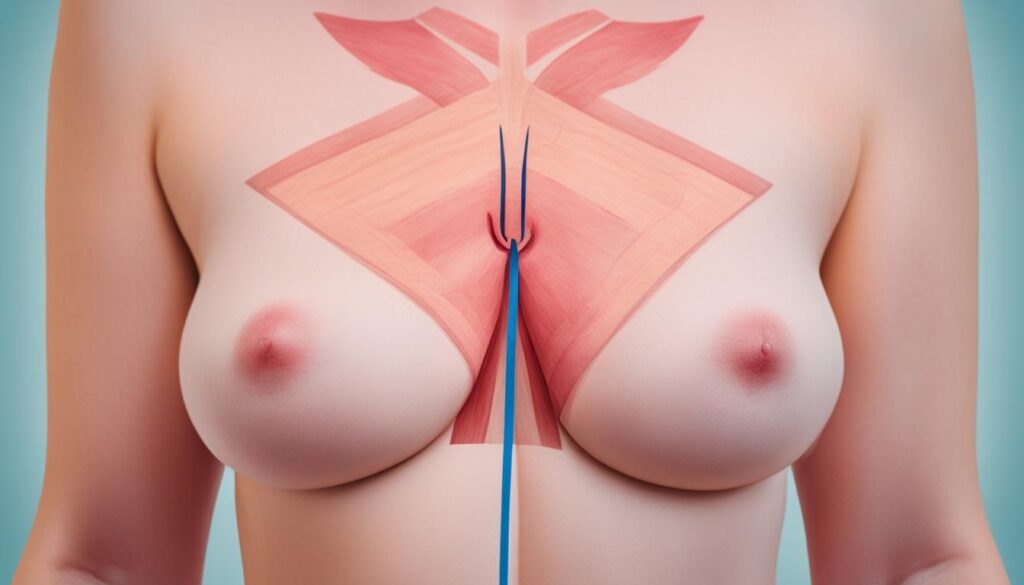
Breast Changes During Breastfeeding and Weaning
A woman’s breasts change a lot during pregnancy, breastfeeding, and weaning. After giving birth, when your milk comes in, your breasts might get sore and swell. This process, called breast engorgement, often goes away in a few days or a week, especially if you keep breastfeeding.
Breast Engorgement and Milk Supply
Early on, your body is making sure your milk supply is good. When your milk ‘comes in,’ your breasts can feel full, firm, and sometimes hurt. This is normal as your body learns to make the right amount of milk for your baby. Nursing often and warm compresses help with this engorgement and keep your milk supply steady.
Breast Aesthetics After Weaning
Once weaning starts and your baby nurses less, your breasts will grow softer and less full. Stopping breastfeeding can change the look of your breasts. Some may stay larger, and others might get smaller. You might also see stretch marks or they might look a bit droopy. But, your age and any weight changes can change your breasts more than nursing.
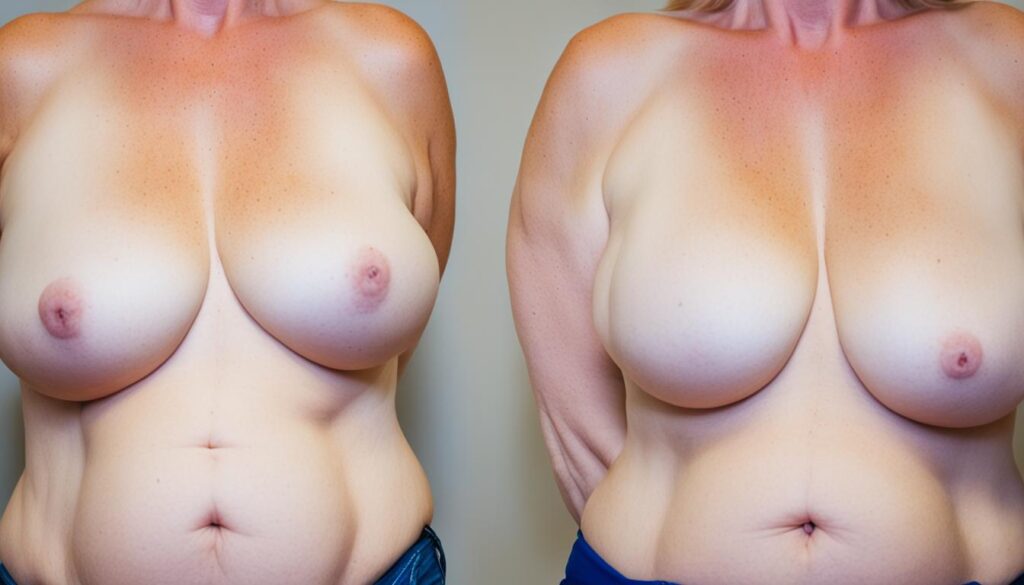
Conclusion
It’s okay to worry about breast size and shape, especially for first-time moms thinking about breastfeeding. Despite concerns, breast size rarely affects how much milk supply you can produce. Breastfeeding challenges often emerge from other factors, like stress or hormonal issues. A hard delivery can also play a part.
Do you find breastfeeding hard or worry about milk supply or your baby’s latch? It’s important to talk to a lactation support expert or your doctor. They can give you the help you need. With guidance, most breastfeeding issues are fixable.
Don’t focus too much on your breast size. Proper support and solutions are key. Trust in your body’s natural ability to feed your baby. Believe that you can succeed in breastfeeding.
